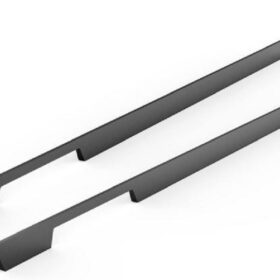Combining Aluminium Profiles with Other Materials in Kitchen Cabinets
In the realm of kitchen design, aluminium profiles have emerged as a versatile and sought-after material for cabinet fabrication. By combining aluminium profiles with other materials, designers and manufacturers can achieve a symphony of aesthetics, functionality, and durability.
Enhanced Aesthetics
Aluminium profiles offer a sleek and modern aesthetic that complements any kitchen style. Their clean lines, smooth surfaces, and ability to be finished in various colors and textures make them highly customizable. When combined with materials such as glass, wood, and stone, aluminium profiles create stunning visual contrasts, from the transparency of glass to the warmth of wood.
Increased Durability
Aluminium is renowned for its strength, corrosion resistance, and longevity. By incorporating aluminium profiles into cabinet construction, the lifespan of the cabinets is significantly extended. Aluminium is also impervious to moisture, making it an ideal choice for use in kitchens, where humidity and spills are common.
Improved Functionality
Aluminium profiles can be easily integrated with various functional elements in kitchen cabinets, such as drawers, shelves, and storage systems. Their lightweight design allows for smooth and effortless operation, while their durability ensures sustained performance over time. The use of aluminium profiles also enables seamless integration of appliances, lighting, and other accessories.
Reduced Production Costs
While aluminium is a premium material, its use in cabinet fabrication can actually reduce production costs in the long run. Aluminium profiles are highly customizable and can be easily cut, machined, and assembled, leading to efficient manufacturing processes. Their durability eliminates the need for frequent repairs or replacements, further reducing maintenance expenses.
Environmental Sustainability
Aluminium is a highly recyclable material, making it an environmentally conscious choice for cabinet construction. By using aluminium profiles, manufacturers can contribute to reducing waste and promoting sustainability. Additionally, aluminium’s resistance to corrosion and moisture prevents it from emitting harmful chemicals into the environment.
Hygienic Surfaces
Aluminium is naturally non-porous, making it an ideal surface for use in kitchens, where hygiene is paramount. It does not harbor bacteria or microorganisms, ensuring that the cabinets remain clean and sanitary. This is especially important in areas where food is prepared and stored.
Conclusion
Combining aluminium profiles with other materials in kitchen cabinets offers a multitude of benefits that enhance the aesthetics, functionality, durability, production efficiency, environmental sustainability, and hygiene of the cabinetry. As a result, aluminium profiles have become an essential component in modern kitchen design, providing homeowners with stylish and practical storage solutions that will stand the test of time.
-
2024-09-14Exploring the Different Types of Modern Closet Door Pulls and Their Applications
-
2024-09-14How Cabinet Door Pull Handles Support High-Traffic Areas
-
2024-09-06Cost-Benefit Analysis of Investing in High-Quality Long Wardrobe Door Handles
-
2024-09-04How Flat Cabinet Handles Enhance Modern Interior Design
-
2024-11-29Top Trends in Modern Kitchen Cabinet Pulls for 2024
-
2024-11-28The Ultimate Guide to Modern Kitchen Cabinet Pulls- Materials, Styles, and Tips
-
2024-11-27Elevate Your Kitchen Design with These Must-Have Modern Cabinet Pulls
-
2024-11-26Sleek and Stylish- The Best Modern Kitchen Cabinet Pulls for a Contemporary Look






